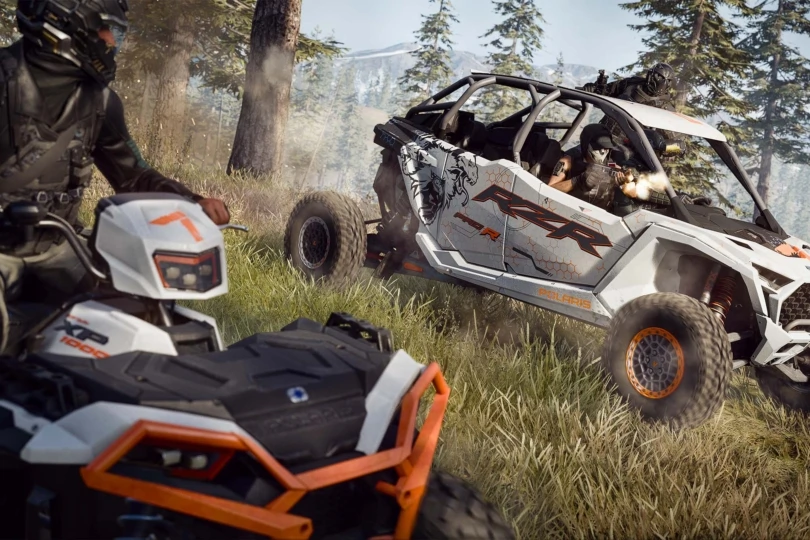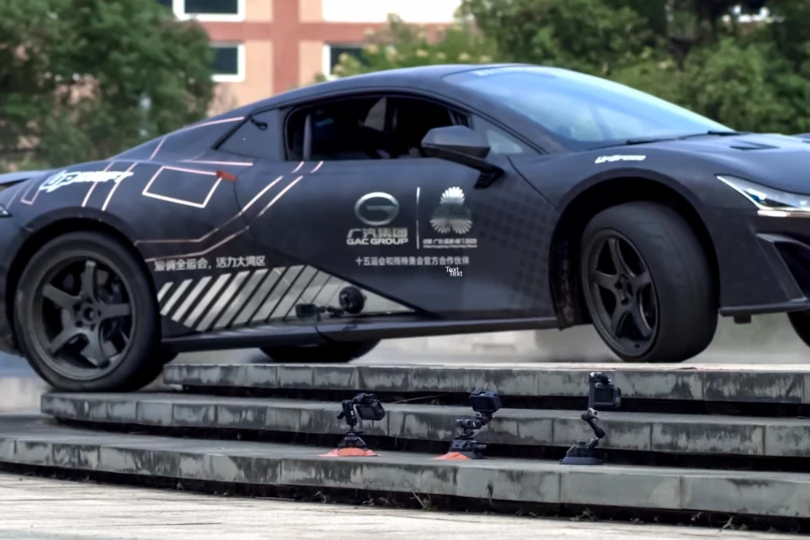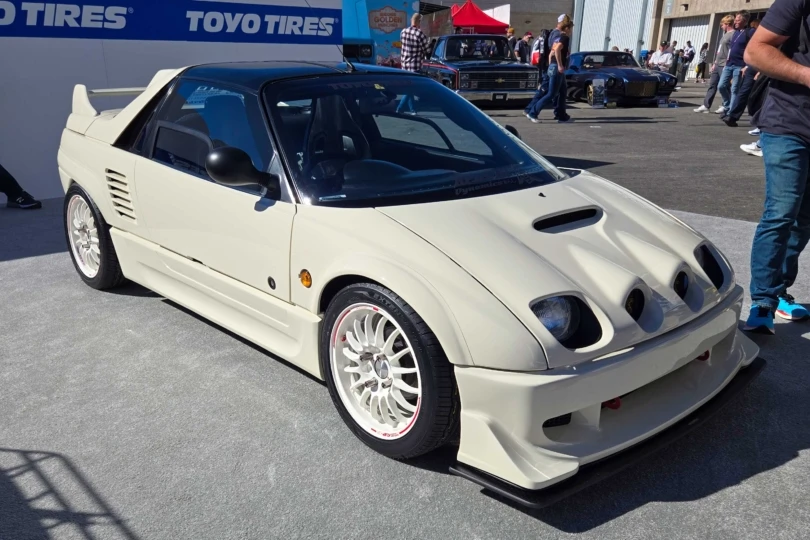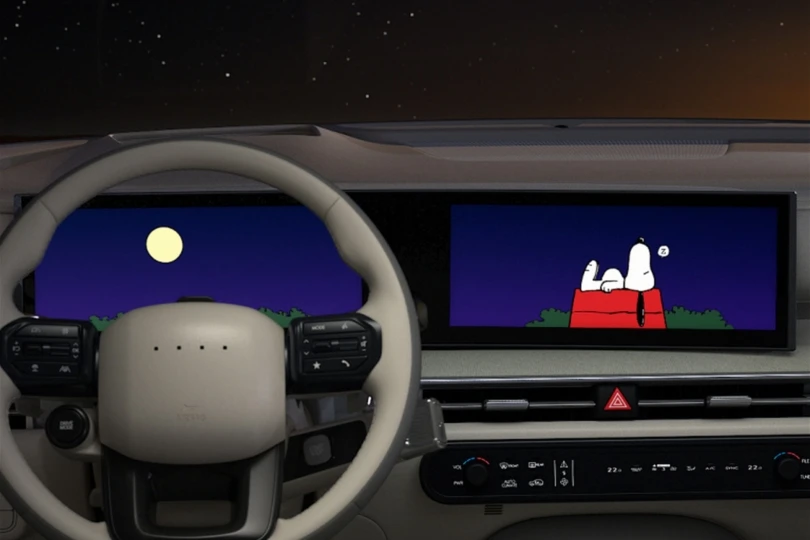I recently read an article about ‘affordable’ cars under $50,000 and had to laugh. You can get a great vehicle for less money. These are some of the best adventure vehicles under $10,000.
Is setting a $10,000 spending cap a fair objective? Most certainly. But it requires some patience and discipline to stay within budget.
Fortunately, the used auto market is full of awesome cars, trucks, and vans that, with a little elbow grease, will show you great times and provide reliable transportation for years to come.
A word on our selections: We chose these cars for their availability to the masses and practicality to get you out to the fun. And no, it’s not the end-all, be-all list of best adventure vehicles under $10,000.
These are some of our favorites that leave money in the bank for other equally important tools and toys.
Honda Element (2003-2011)

During the Element’s 9-year production run, it has proved itself a reliable daily driver for many who needed a dependable, practical vehicle. If you can score one with all-wheel drive, the roads less traveled immediately become accessible.
Today, the Honda Element fulfills the workhorse role for the budget-conscious. Only try to avoid the 2003 model year, as the first year of production had the most complaints and reported issues, as explained by CoPilot and MotorAudit.
Price: The choice models will fetch prices in the neighborhood of 12 to 15 large. Shop around for a well-maintained roller, and prices become reasonable somewhere at $8,500 or below. If you’re not afraid of taking on a project, it’s not uncommon to find one for around $3,000 or less.
The good: Honda has a robust reputation for reliability and build quality. Its high ground clearance makes traversing backroads and trails a breeze. Having a rugged plastic interior and no carpeting doesn’t elevate the Element in any way except when it comes to cleaning. Honda engineers knew the outdoors would make its way inside the cabin and prepared their boxy utility vehicle for easy cleanup. You can even hose it down with soap and water for major cleanups.
The bad: It only seats four, isn’t the fastest pony in the stable, and the gas mileage isn’t too good.
Why Element? The Honda Element is still a fan favorite for those who enjoy the active lifestyle or need a penny-wise work mule. Aside from its below-average fuel economy, the small yet spacious Element will hold its value. Moreover, it’ll last well over 200,000 miles, has space to fit full sheets of plywood if you take out the back seats, and is economical to own.
Toyota Sequoia XK30, XK40 (2001-2007)

The Toyota Sequoia, which shares many parts with the Tundra, is a roomier version of the Land Cruiser and a sturdy towing vehicle. Emphasis is placed on creature comfort and less on its off-road capabilities than the Land Cruiser.
Price: In 2005, the Sequoia got a facelift and healthy power increase from 240 to 282 horsepower and 325 pound-feet of torque when Toyota upgraded the 4.7L V8 with variable valve timing (VVT-i). The average selling price for the 2005-2007 (XK40) model years is around $8,500. Moderately better deals exist for the 2001-2003 (XK30) Sequoias if the midcycle upgrades aren’t important to you.
The good: 128 cubic feet equate to lots of cargo space for carrying your gear. Drivers and passengers will appreciate the refined creature comforts, available second-row captain chairs, and third-row seating. The Sequoia has a pleasing driving experience for its size and strong towing capability.
Build quality and reliability meet Toyota standards and reputation. A burly max towing capacity of 6,200 pounds makes the Sequoia a first-class mule for hauling your recreational toys.
The bad: Slow-and-go traffic deals a heavy blow to fuel economy. Freeway speeds show its thirst for gas. Long drives are hampered by a 26-gallon gas tank. Interior plastics are known for brittleness in early models. Factory brakes are not entirely up to spec for an SUV weighing more than 5,000 pounds. Consider a brake upgrade if towing or you’re a driver who regularly drives above the posted speed limit.
Why Sequoia? Often overlooked as an option for a full-size SUV, the Sequoia’s steady resale value is a testament to its safety record, reliability, and build quality.
Toyota Prius (2nd-Gen 2004-2009)

It’s easy to see why several Toyotas were chosen, but how did a Prius make itself onto an adventure vehicle list? Well, the little fuel-sipper has some hidden talents. Space efficiency is one component where it excels, along with its low cost of ownership.
Price: A second-gen Prius will ring up roughly in the $5,000 range. Most Prius car batteries will work effectively for 8 to 10 years or anywhere between 100,000 and 150,000 miles. When it’s time for a new hybrid battery pack, the replacement cost falls in the realm of $2,500 to $4,400.
The good: Toyota’s reputation for reliability doesn’t falter with the Prius. It scores highly in U.S. News Cars rankings and has an excellent value rating by IntelliChoice for its predicted 5-year total cost of ownership compared to other vehicles in its class.
Phenomenal fuel economy, an impeccable safety record, and an efficient interior layout that offers a lot of passenger and cargo room are more reasons why the Prius is an intelligent choice. Because of its enduring popularity, an abundance of aftermarket add-ons and upgrades abound.
The bad: A lackluster ride quality, cramped rear seats, and boring acceleration bring down the Prius a notch. However, a good set of KYB shocks will solve the soft suspension ride. Build quality is commendable, except for the 2010 and 2016 models that had some major mechanical problems and interior accessory concerns.
Why Prius? When converted to van life, the back seat folds, opening up enough space to stretch out and sleep. Think the Prius can’t handle the roads less traveled? A simple upgrade of shocks and a 1.5-inch lift kit will set up the Japanese hatchback to take on the washboard and bumps of gravel and access roads when heading out to remote locations. Factor in its admirable reliability rating, and the Prius is unlikely to break down when venturing far from home.
Jeep Cherokee XJ (1984-2001)

The Jeep Cherokee is a classic American off-roader with lots of upgrade options. A buddy once purchased a stock model for $3,000 with just 125,000 miles. After adding a lift kit and tires, his final bill was about $6,000.
Price: Its iconic status and heavy activity in the pre-owned automotive market over the past several years have moved the average price to about $12,000. Nevertheless, there’s still a fair chance of finding the right one with fewer than 140,000 miles below $10,000 and having money left over for add-ons and repairs.
The good: Stock Cherokees are easy to come by and easy to upgrade. A 4-inch lift installed by a good mechanic costs just under $1,000. Add some good tires and other mechanical fixes, and you’ve got a great vehicle. Many used models are already lifted and ready for the trail.
The bad: Old Cherokees take a lot of wrench time and tend to have lots of small issues that can lead to headaches — O2 sensors, dashboard lights, check engine lights, and oil leaks are some common problems.
Why Cherokee? If you want a tough-looking adventure vehicle with few frills that can go damn near anywhere, the Cherokee delivers.
Ford Ranger XLT (1998-2011)

When I bought my 2000 Ford Ranger in late 2014, it had 130,000 miles, a bright-red check engine light, a dinged side panel, and crappy tires. And $3,000 later, it was a great truck that dragged me all over the Rocky Mountains in all sorts of weather. All in? $6,500.
Price: Rangers vary widely depending on age, but a savvy buyer should be able to get into a decent early-2000s model for around $7,000. Lower mileage will cost a lot more.
The good: The Ford Ranger XLT was made in massive quantities, so it’s easy to find. It’s also easy to find cheap parts and work on these smallish trucks.
The bad: You will probably spend some time with a wrench, as high-mileage Fords aren’t the most reliable adventure vehicles under $10,000 on the road. I’ve put a fair bit of work into this truck, but it’s still $20,000 cheaper than buying new.
Why Ranger? If you want a pickup that easily fits into a normal parking spot, this is one of just a few midsize options.
Chevy Silverado (1999-2007)

The Silverado was named Motor Trend’s Truck of the Year four times since its introduction in 1999 and has two distinct generations, before and after 2007. The new models are nice but nearly impossible to find in a 4×4 under $10,000. The ubiquitous full-size Chevy is available in many trims and configurations that should fit any taste in a backroad explorer.
Price: Nice-enough Silverados under 150,000 miles are relatively easy to find between $5,000 and $10,000. Newer models under $10,000 will likely have super-high mileage, some issues to contend with, and body damage.
The good: Silverados are big trucks, but they’re pretty easy to drive and are remarkably comfortable inside. This is a full-size truck, and thus a 4×4 model will get you anywhere you should need to go.
Feeling frisky? Beef it up with a lift and go get weird. Want a camper? Slap on a topper and toss in a mattress. Boom.
The bad: Well, they’re kind of huge. You won’t enjoy parallel parking in downtown Denver. And filling the tank? Ouch.
Why Silverado? If you’re looking for a full-size pickup, this is one great choice that’s easy to find at a good price on the used market.
Toyota 4Runner (1995-2009)

The 4Runner is a reliable and capable SUV. And with thousands of used models on the road, they are possible to find with moderate mileage for under $10,000. This date range covers the third and fourth generations of this model.
Price: Some may think that scoring a 150,000-mile or less 4Runner (or Tacoma) in a respectable condition for less than $10,000 is like hunting for that elusive unicorn. However, a quick search of Craigslist brings up dozens of choices, with some dipping well below the $10,000 mark.
The good: The 4Runner is a long-running, reliable adventure vehicle that’s comfortable for four adults. It’s a good around-town car, is comfortable on long drives, and is capable off road.
The bad: Interior storage is somewhat small for such a large vehicle. They also come with a Toyota price tag, so expect to pay a fair chunk of change, even for vehicles with high mileage. While they’re OK off-road, clearance is not spectacular, and approach angles are limited.
Why 4Runner? Although many SUVs have gone the way of cars, the 4Runner has a body-on-frame design, meaning fair off-road performance.
Subaru Outback (2004-2014)
It’s been called the “state car” of Colorado, Idaho, and pretty much everywhere else that gets lots of snow. With full-time all-wheel drive, the Subaru Outback is a solid performer on modest off-road terrain and absolutely amazing on snow. It’s also spacious, efficient, and runs forever.
Price: These have been around for a long time, so the range is vast. You should be able to find a third- or fourth-gen Subie with moderate mileage for around $8,500. These things dependably run up to 300,000 miles or more, so don’t be afraid of miles. Just expect some significant maintenance bills.
The good: At the Grand Canyon for an ultramarathon, a local called it a “mud sled” while my crew was discussing the condition of fire roads they needed to drive to reach aid stations. These things really are rugged, especially for a car. They have decent clearance and rip around fire roads with aplomb. Inside, they are as roomy as most SUVs, yet they sit lower and get respectable gas mileage. Not to mention, they are very reliable.
The bad: You may be branded a tree-hugging hippie. Why? Well, if you’ve ever driven through Boulder, Colorado, you’ll know. If you’re cool with this, or just don’t give a hoot what others think, the Subaru is an excellent vehicle.
Be certain to check the antifreeze and oil for signs of bad head gaskets, a common problem with this model that is expensive to fix on the two-sided boxer engine.
Why Outback? These are great cars that seat five in comfort with lots of room for extras inside. You can lay down the seat and sleep in the back. You can expect lots of trouble-free miles from the Outback so long as you avoid overheating and the head gaskets are good.
Toyota Land Cruiser 80 Series (1990-1997)
Sadly, it’s nearly impossible to find a 60 or 70 Series Land Cruiser that isn’t a pile of rust and is running for under $10,000. But if you shop smartly, you should still be able to find an 80 Series Land Cruiser around that $10,000 threshold.
Price: You can get a quality 80 Series (fifth-gen J80) for $10,000, but expect it to have high miles. The “Toyota tax” is in full effect here, as fans have continued to pine after nice examples. Prices for nice examples are only going up at this point.
The good: With a Land Cruiser, you’re joining the ranks of legions of devoted fans. These things have been everywhere and are well-respected off-road machines anywhere in the world. They are excellent expedition vehicles, and their customization options are endless.
The bad: Get ready to choke when you fill the tank. The 1990 model gets 11 mpg in the city and 13 mpg on the highway — unless you can find a rare-in-the-U.S. turbo diesel model. Watch out for head gasket problems and valve gasket oil leaks.
Why Land Cruiser 80 Series? Comfortable seating for up to five passengers, legendary reliability, and genuine off-road capability are just some of the reasons people around the world love these beasts.
Isuzu Trooper (1992-2002)

Boxy with a big interior, the second-gen Isuzu Trooper is a workhorse of an SUV. Shoot, you can fit bikes in the back without taking the wheels off, and it’s the only truck in which we’ve fit a tandem (removing the front wheel).
Price: Troopers were available in the U.S. through 2002, so you’ll have to choose from an older model. Many cost well under $5,000, with beaters under $2,000. A clean, lower mileage example will set you back around $10,000 these days.
The good: We can’t think of any other midsize SUV with the interior space of a Trooper. These things are basically large 4×4 boxes on wheels. And that’s awesome in the space department. They also get decent gas mileage and have fairly high stock clearance.
The bad: Beauty is in the eye of the beholder, and these are, well, boxy. They’re also tricky for the home mechanic and require a lot of specialized tools. Reliability can be a problem with older Troopers, as with finding a qualified mechanic.
Why Trooper? Want to sleep in the back of your SUV? This is your steed. They have ample interior space but maintain a modest external presence.
Toyota Tacoma (1995-2004)

Ah, the Taco. The early models were truly small trucks before they got nearly as big as Tundras. Reliable, capable, and good-looking, Tacomas hit all the high marks.
Price: Snagging a good one for under about $10,000 calls for a little luck and a long search. A solid example will probably set you back right around $17,000.
The good: Classic good looks and a vehicle that can’t be killed. There’s a good reason this is one of the most popular pickups in the world.
The bad: The stock suspension isn’t considered adequate by most serious off-roaders. If you’re going to push it over tough terrain, you’ll want an upgrade. Also, good luck finding a bargain. Many Tacomas pushing 200,000 miles also push beyond the $10,000 mark. Some Tacomas are prone to frame rust (many were recalled), so be sure to check the frame carefully.
Why Tacoma? They will run and run and run. These things are legendary.
VW Vanagon Multivan (1979-1992)

It’s the classic VW bus but with a better, water-cooled engine (that means the heater works). Given its high clearance, the T3 (third-gen Type 2) Vanagon is pretty off-road capable, especially with chains.
Price: These old babies have held their value. Well-maintained models still bring well over $10,000 these days. That said, many can be found for much less if you’re willing to do some work, with $8,000-10,000 examples available regularly. It’s the Westfalia editions that command the big dollars.
The good: The Vanagon is huge inside and carries up to seven passengers in reasonable comfort. It has all kinds of conversion potential. If you’re lucky, you may even find one of the Westfalia camper models that fit your budget.
The bad: Can you say underpowered? You will always see the Vanagon in the far right lane, creeping up mountains at a snail’s pace. The saving grace is that first gear is really low, so it will always get going. It was manufactured between 1979 and 1990, so you’ll be looking at an old model and should be ready to wrench on it.
Why Vanagon? These vans have classic styling, tons of room, and can handle easy off-road conditions with their high clearance.
Toyota Corolla (1998-2010)

Why is the measly Corolla on this list? Because I’ve taken one on more adventures than any car other I’ve ever owned, and I still own one to this day — it’s nicknamed the “off-road-ola.” It often gets chosen over my truck for one serious reason: gas mileage.
Price: $2,000 give or take
The good: Cheap, reliable transportation that is remarkably spacious for two adults. The back seats fold down to allow long items (skis) to fit in the trunk. Stick on a bike rack, and you can carry a full summer’s worth of camping gear with no trouble. Bonus if you get the hatchback model.
And you’d better believe this thing can off-road (OK, within reason).
The bad: It can’t really off-road. It’s a car. Factor in the price of a roof rack; you’ll need it!
Why Corolla? If you are strapped for cash, a Toyota Corolla will get you there reliably for very little money. Want to road-trip to Yosemite with a bunch of climbing gear? Turn the key and go. Need to drive from the Midwest to the Pacific Ocean for some R&R? Turn the key and go. These tiny tanks run on a little fuel and crossed fingers.
So, those are some of our favorites. Yes, tons of vehicles can get you into — and hopefully out of — adventure.
Frequently Asked Questions
What Cars Are Best for Adventure?
The best adventure vehicles will last for years of service, are versatile, have numerous aftermarket parts available, and retain an affordable ownership cost.
What Car Can I Buy With $10,000?
Great, dependable vehicles can be found for $10,000 or less. Older Japanese sedans, such as the Toyota Camry, Honda Accord, and Mazda 3, are excellent compact cars that combine reliability and affordability. The third- and fourth-generation Subaru Outback is a popular choice for young families and people who enjoy an active lifestyle.
What Is Considered High Mileage on a Car?
A common threshold of 100,000 miles is a guideline when shopping for a used car. Typically, older vehicles require more expensive maintenance and repairs after 100,000 miles or 8 years on the road.
Nevertheless, modern automotive technology and regular service intervals mean most production cars, trucks, and SUVs will continue running well past 100,000 miles. Some automakers are known for making vehicles that easily exceed 200,000 miles.
An additional factor to consider is that highway miles put less wear on a vehicle than one primarily driven in the city. A well-maintained car with 150,000 miles might outlast one with mostly city miles.
How Many Miles Are Too Many on a Used Car?
Fundamentally, a vehicle’s condition relates directly to its motor vehicle history, regular service intervals, and staying on top of repairs when things do break. It’s not uncommon for well-maintained cars to last much longer than 100,000 miles or more without extensive mechanical work.










